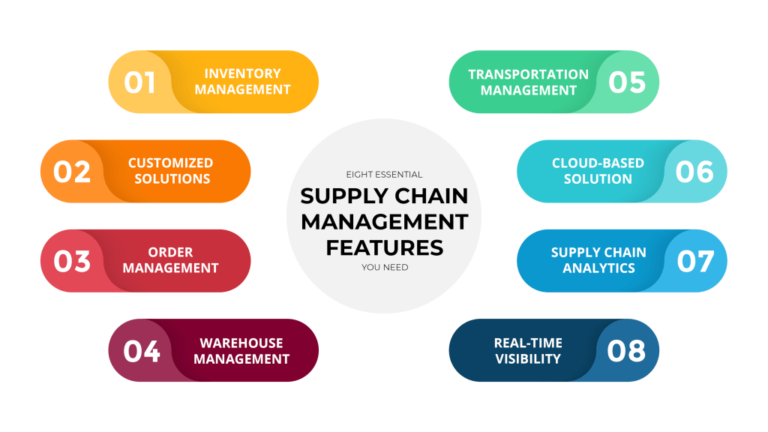Choosing eco-friendly web hosting is essential. It helps reduce your carbon footprint.
In today’s digital age, websites consume a lot of energy. Traditional hosting services rely on data centers that use a significant amount of power. This contributes to environmental pollution. Eco-friendly web hosting offers a solution. It uses renewable energy sources, minimizing the impact on our planet.
By opting for green hosting, you support sustainability. You also show your commitment to the environment. This choice can even enhance your brand’s reputation. In this blog, we will explore key factors to help you choose the best eco-friendly web hosting. This will ensure your site remains efficient and green. Let’s dive in and make a positive change together.
Introduction To Eco-friendly Web Hosting
Have you ever thought about the environmental impact of your website? It’s easy to overlook, but web hosting uses a lot of energy. Choosing eco-friendly web hosting can help reduce your carbon footprint and support sustainable practices.
Importance Of Sustainable Hosting
Why should you care about sustainable hosting? First, it helps protect our planet. By using eco-friendly web hosting, you are supporting companies that use renewable energy sources like wind and solar power.
Second, sustainable hosting can save you money. Green hosting providers often invest in energy-efficient technologies, reducing their operating costs. These savings can be passed on to you through lower hosting fees.
Finally, having an eco-friendly website can improve your brand image. Consumers today care about the environment and prefer to support businesses that share their values. By choosing sustainable hosting, you can attract more eco-conscious customers.
Impact Of Web Hosting On The Environment
Web hosting has a significant environmental impact. Data centers, where websites are stored, use a lot of electricity. This electricity often comes from fossil fuels, which contribute to climate change.
Additionally, data centers generate a lot of heat. They need powerful cooling systems to keep servers from overheating. These cooling systems also consume a lot of energy, increasing the carbon footprint.
Consider this: a single data center can consume as much electricity as a small town. That’s a lot of energy! By choosing eco-friendly web hosting, you help reduce this massive energy consumption.
So, how can you make the switch? Look for hosting providers that use renewable energy sources. Ask about their energy efficiency practices and support for green initiatives. Your choice can make a big difference.
Are you ready to make your website more sustainable? Start by choosing eco-friendly web hosting and take a step towards a greener future.
Key Features Of Eco-friendly Web Hosting
Choosing eco-friendly web hosting is crucial for reducing your website’s environmental impact. Eco-friendly web hosting focuses on sustainable practices and energy efficiency. Understanding key features helps you make an informed choice.
Renewable Energy Sources
Eco-friendly web hosting providers use renewable energy sources. Solar, wind, and hydro power are common choices. These sources reduce reliance on fossil fuels. Look for hosts that invest in renewable energy. This commitment shows their dedication to sustainability. Some hosts even run their data centers entirely on green energy.
Carbon Offset Programs
Many eco-friendly hosts participate in carbon offset programs. These programs balance out carbon emissions. Hosts invest in projects that reduce or capture CO2. Examples include reforestation and renewable energy projects. By choosing a host with carbon offset programs, you support global environmental efforts. This makes a positive impact on our planet.
Benefits Of Choosing Green Web Hosting
Choosing eco-friendly web hosting offers numerous benefits, making it an essential consideration for businesses and individuals alike. Opting for green web hosting not only contributes to a healthier planet but also enhances your brand’s reputation. Let’s dive into these advantages.
Reducing Carbon Footprint
Web hosting servers consume a significant amount of energy. By selecting eco-friendly options, you reduce your carbon footprint. Green web hosting providers use renewable energy sources like wind and solar power.
Imagine your website running on energy from the sun! This choice helps you play a part in combating climate change. It’s a simple way to make a big difference.
Next time you log into your website, think about the positive environmental impact. Does it make you feel more responsible? It should!
Enhancing Brand Image
Your brand image matters. Choosing green web hosting can enhance it. Consumers are increasingly eco-conscious and prefer brands that care about the environment.
Imagine telling your audience that your website is powered by renewable energy. It shows your commitment to sustainability. This can lead to increased trust and loyalty.
Have you ever chosen a product because of its eco-friendly nature? Your customers will feel the same way about your brand.
These benefits not only help the planet but also improve your business. Are you ready to make the switch?
Choosing eco-friendly web hosting is a win-win situation. It’s good for the environment and great for your brand. Don’t miss out on these advantages. Take action today and contribute to a greener future.
Top Green Web Hosting Providers
Choosing an eco-friendly web hosting provider is crucial for reducing your website’s carbon footprint. Many providers now offer green hosting solutions. These companies use renewable energy and efficient data centers. Here, we will explore the top green web hosting providers.
Features Comparison
Green hosting providers offer various features. Some use 100% renewable energy. Others purchase green energy credits. Many providers plant trees for every customer. Look for providers with energy-efficient servers. Check if they have environmental certifications. Compare their uptime guarantees. Reliable uptime is essential for your website.
Customer Reviews
Customer reviews offer insights into a provider’s performance. Read reviews about their support quality. Customer service is vital for any hosting provider. Look for reviews that mention uptime and reliability. Check if customers are satisfied with their green initiatives. Happy customers often highlight good experiences. Dissatisfied ones may point out issues.
Evaluating Hosting Performance
Evaluating hosting performance is crucial for choosing eco-friendly web hosting. It ensures your site runs efficiently and sustainably. Let’s delve into key aspects such as speed and reliability, and uptime guarantees.
Speed And Reliability
Speed is vital for user experience. Fast loading pages keep visitors engaged. Reliable hosting means fewer disruptions. Choose hosts with solid infrastructure. Look for SSD storage and optimized servers. These elements enhance speed and reliability.
Uptime Guarantees
Uptime guarantees reflect a host’s reliability. Higher uptime means your site is accessible. Aim for hosts offering 99.9% uptime. This ensures minimal downtime. Check user reviews for uptime performance. Real-world feedback is valuable.
Cost Considerations
Choosing eco-friendly web hosting involves many factors. One of the most important factors is cost. While many people assume green hosting is expensive, this isn’t always the case. Let’s delve into the cost considerations for eco-friendly web hosting.
Price Vs. Value
Price is often the first thing people look at. But price alone doesn’t tell the full story. It’s essential to consider the value you get. Eco-friendly hosts often use energy-efficient servers. This can lead to fewer outages and better performance.
Some green web hosts also invest in renewable energy. This can contribute to a better environment. Such features add value beyond just the price tag. Always weigh the benefits against the cost.
Long-term Savings
Many eco-friendly hosts offer long-term savings. Energy-efficient servers use less electricity. This can lower operational costs over time. These savings often translate to lower hosting prices for you.
Green web hosts may also offer special discounts. These can be for long-term commitments or yearly payments. This can make eco-friendly hosting more affordable in the long run. Investing in green hosting today can save you money tomorrow.
Migrating To Eco-friendly Hosting
Selecting eco-friendly web hosting involves considering renewable energy usage and the provider’s sustainability practices. Look for certifications and transparent environmental policies. Such choices help reduce your carbon footprint.
Migrating to eco-friendly hosting is a significant step towards a greener digital footprint. It’s not just a trend; it’s a responsible choice. But how do you actually make this transition smoothly?Steps For A Smooth Transition
First, start by researching eco-friendly hosting providers. Look for those using renewable energy sources. Check their green certifications. Next, back up your website data. This step is crucial. It ensures nothing gets lost during the switch. Then, inform your current hosting provider about your move. They might have policies or processes to assist you. Once you have chosen your new provider, follow their migration instructions. Most green hosts offer migration support. Use this to avoid common pitfalls. Finally, test your website post-migration. Ensure everything works as expected. This includes checking links, images, and forms.Common Challenges And Solutions
One challenge you might face is downtime. Downtime can affect user experience. To mitigate this, schedule your migration during low-traffic periods. Data loss is another concern. Always have a complete backup. Use migration tools provided by your new host to ensure data integrity. Compatibility issues can arise. Your new host’s environment may differ. Check for any required software updates or changes. Customer support is crucial during this process. Choose a host with excellent support. Quick responses can save time and stress. Migrating to eco-friendly hosting is a proactive choice for sustainability. By following these steps, you’ll make the transition smoother. Have you considered the impact of your website’s carbon footprint?Frequently Asked Questions
What To Look For When Choosing A Web Hosting Provider?
Check uptime reliability, customer support, and scalability options. Evaluate security features, pricing, and included resources like storage and bandwidth.
What Is An Eco Friendly Website?
An eco-friendly website minimizes energy use and carbon footprint. It uses efficient coding, optimized images, and green hosting solutions.
How Much Does Green Hosting Cost?
Green hosting costs between $3 to $15 per month. Pricing varies based on features and providers.
What Is The Best User Friendly Web Hosting Site?
Bluehost is the best user-friendly web hosting site. It offers excellent customer support, easy-to-use interface, and affordable pricing.
Conclusion
Choosing eco-friendly web hosting benefits both the environment and your business. It reduces carbon footprints and promotes sustainability. Prioritize hosts with renewable energy sources and green certifications. Research thoroughly to find the best fit for your needs. Opt for providers that support environmental initiatives.
Make a positive impact with your website. Your choices matter. Start today and contribute to a greener future.





